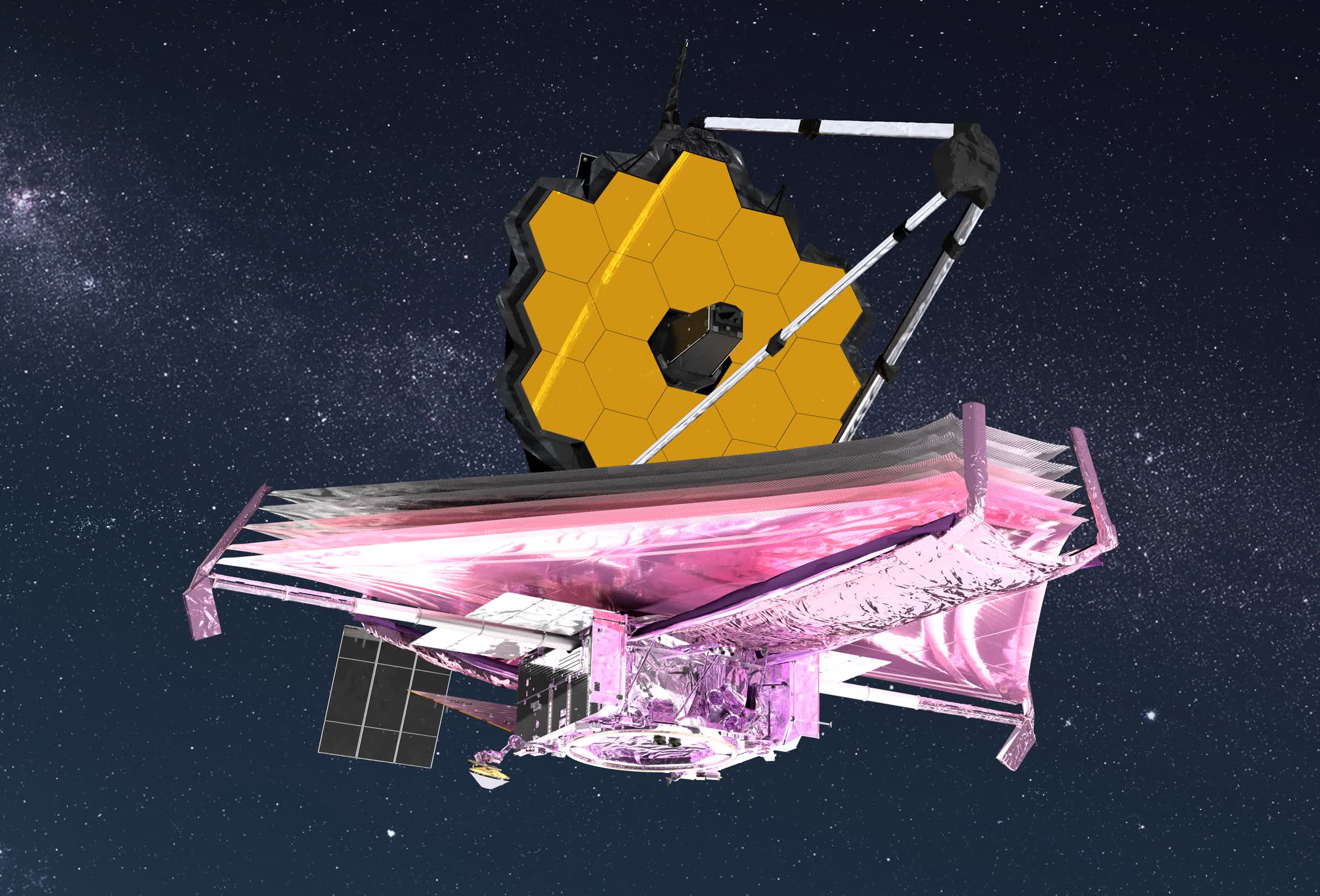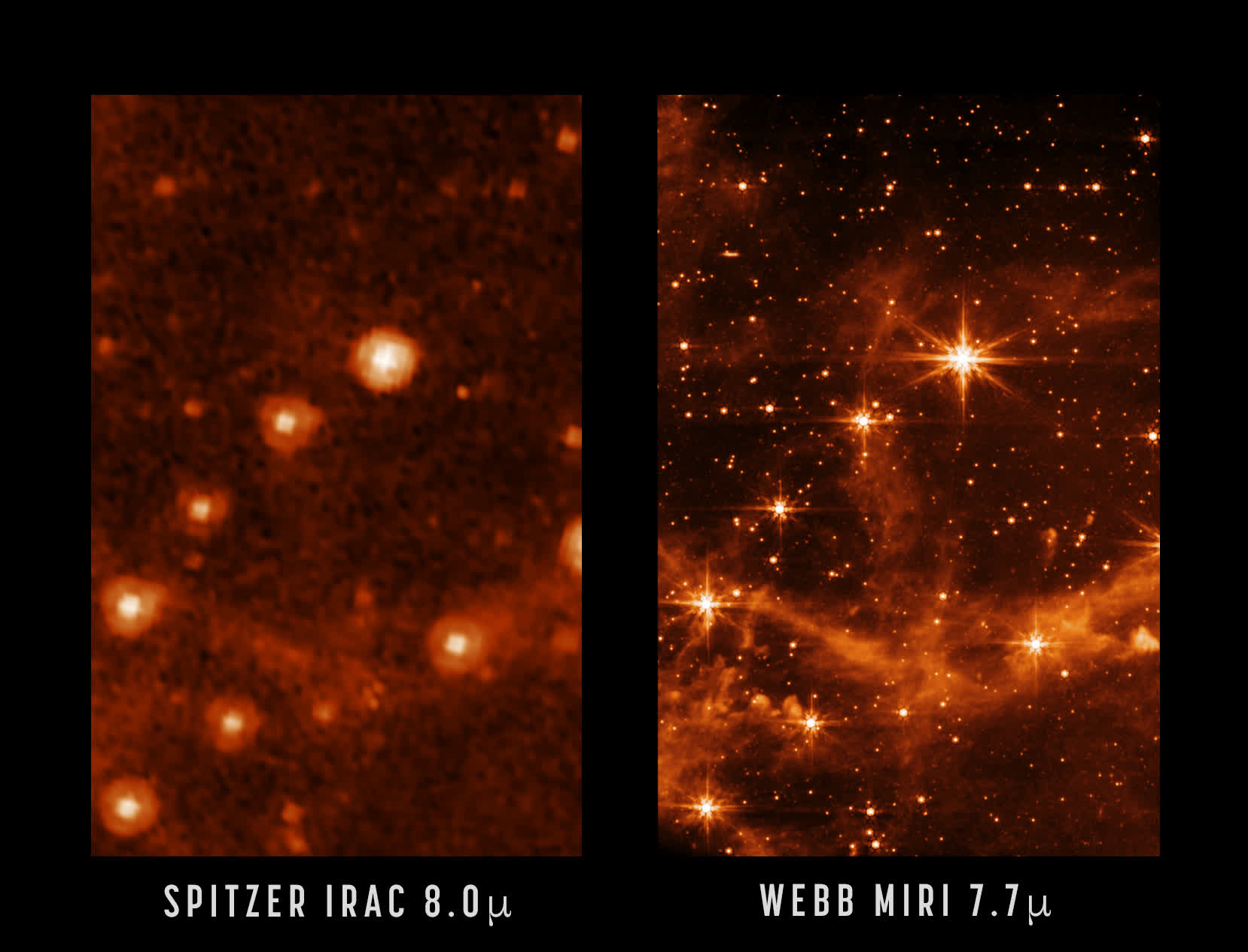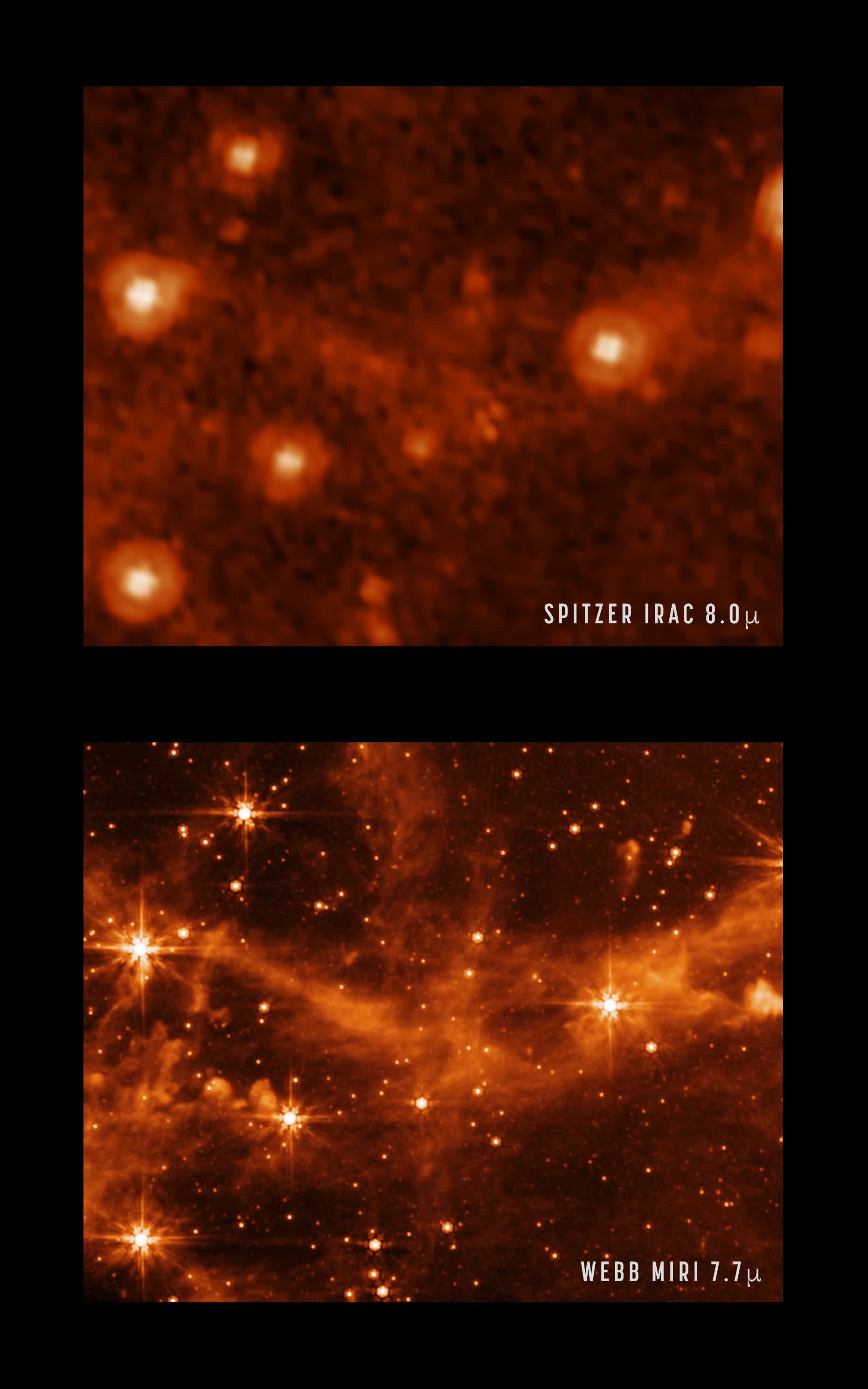Forward-looking: NASA recently completed the final stage of telescope alignment on the James Webb Space Telescope, meaning the scope is capable of capturing sharply-focused images with each of its four onboard science instruments. NASA has since moved to the science instrument commissioning phase ahead of official operations this summer, but the space agency spent some time this week taking a closer look at a sample image from Webb's coldest instrument.

The Mid-Infrared instrument, or MIRI for short, features a camera and a spectrograph capable of seeing light in the mid-infrared spectrum. It covers the wavelength range of five to 28 microns.

These test images were captured at 7.7 microns and shows part of the Large Magellanic Cloud, a small satellite galaxy of the Milky Way. The comparison image of the same target was captured using NASA's Spitzer Space Telescope's Infrared Array Camera (at 8.0 microns). That scope launched in 2003 and completed science operations in January 2020.

We won't have to wait until this summer to learn more about the universe around us. On Thursday, the European Southern Observatory (ESO) and the Event Horizon Telescope (EHT) project will hold a press conference to present "groundbreaking" results from the EHT. The conference will stream live on YouTube starting at 10 a.m. Eastern on Thursday, May 12.
Some believe the conference could involve a supermassive black hole known as Sagittarius A*, but we won't know for sure until later this week.
https://www.techspot.com/news/94536-nasa-shares-images-webb-space-telescope-coldest-instrument.html